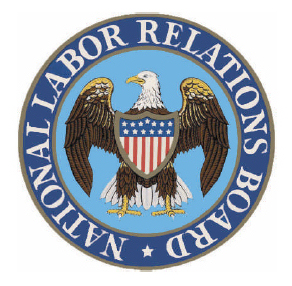 |
| English: Color logo of the National Labor Relations Board, an independent agency of the United States federal government. (Photo credit: Wikipedia) |
SENTELLE, Chief Judge.
*1 Noel Canning petitions for review of a National Labor Relations Board (“NLRB” or “the Board”) decision finding that Noel Canning violated section 8(a)(1) and (5) of the National Labor Relations Act (“NLRA”), 29 U.S.C. § 158(a)(1), (5), by refusing to reduce to writing and execute a collective bargaining agreement reached with Teamsters Local 760 (“the Union”). See Noel Canning, A Division of the Noel Corp.,358 N.L.R.B. No. 4, 2012 WL 402322 (Feb. 8, 2012) (“Board Decision”). NLRBcross-petitions for enforcement of its order. On the merits of the NLRB decision, petitioner argues that the Board did not properly follow applicable contract law in determining that an agreement had been reached and that therefore, the finding of unfair labor practice is erroneous. We determine that the Board issuing the findings and order could not lawfully act, as it did not have a quorum, for reasons set forth more fully below.
I. INTRODUCTION
At its inception, this appears to be a routine review of a decision of the National Labor Relations Board over which we have jurisdiction under 29 U.S.C. § 160(e) and(f), providing that petitions for review of Board orders may be filed in this court. The Board issued its order on February 8, 2012. On February 24, 2012, the company filed a petition for review in this court, and the Board filed its cross-application for enforcement on March 20, 2012. While the posture of the petition is routine, as it developed, our review is not. In its brief before us, Noel Canning (along with a movant for status as intervenor whose motion we will dismiss for reasons set forth hereinafter) questions the authority of the Board to issue the order on two constitutional grounds. First, petitioner asserts that the Board lacked authority to act for want of a quorum, as three members of the five-member Board were never validly appointed because they took office under putative recess appointments which were made when the Senate was not in recess. Second, it asserts that the vacancies these three members purportedly filled did not “happen during the Recess of the Senate,” as required for recess appointments by the Constitution. U .S. Const. art. II, § 2, cl. 3. Because the Board must have a quorum in order to lawfully take action, if petitioner is correct in either of these assertions, then the order under review is void ab initio. See New Process Steel, L.P. v. NLRB, 130 S.Ct. 2635 (2010).






No comments:
Post a Comment